
It’s 2011 — NASA’s Year of the Solar System! Join us on a cosmic road trip to explore solar system mysteries and share in the thrill of discovery at an exciting new workshop for educators of all grade levels.
NASA’s Discovery and New Frontiers missions are traveling vast distances to find answers to age-old questions. These celestial detectives are revealing how our solar system formed and evolved, doing brilliant science with “way cool” technologies!
• See sights never before seen on Mercury: MESSENGER!
• Get up close to asteroids and comets: Dawn, Stardust-NExT and EPOXI!
• Map the moon’s gravity with twin satellites: GRAIL!
• Peer through Jupiter’s clouds: Juno!
• Cruise to the outer reaches of the solar system: New Horizons!
Hear from mission scientists and engineers, discover engaging activities for grades K-12 classrooms and out-of-school time programs, and receive a resource book loaded with activities and links.
Details
When: Saturday, March 19, 9 a.m. to 2 p.m. at each location listed below.
Where:
• NASA’s Jet Propulsion Laboratory, Pasadena, Calif.
• NASA’s Johnson Space Center, Houston, Texas.
• Jackson Middle School Observatory, Champlin, Minn.
• Johns Hopkins University Applied Physics Laboratory, Laurel, Md.
Cost: $25 (lunch and snacks included).
Register to attend at http://www.dawn-mission.org/discovery/thrill_of_discovery.asp.
Special Speakers
- Six years after launch, MESSENGER will enter orbit around Mercury on March 18. We are very fortunate to have Dr. Sean Solomon, MESSENGER’s Principal Investigator, tell us about the mission’s goals, the science findings so far, and the excitement of reaching the orbiting phase of the mission.
- The Dawn mission uses ion propulsion to visit the two largest objects in the asteroid belt. Launched in September 2007, Dawn will arrive at asteroid Vesta this July for a year-long orbit. Dawn’s Chief Engineer, Dr. Marc Rayman, will share why this mission is so unique and what scientists hope to learn.
- Juno’s quest is to aid in the understanding of the formation and evolution of Jupiter, which will help us comprehend the origin of the entire solar system. Juno will launch this August. Dr. Ravit Helled from the gravity team tells us how Juno will reveal “the giant planet story.”
Watch the speakers on the free webinar if you can’t be at one of the sites.
Questions? Send e-mail to Shari Asplund at JPL.

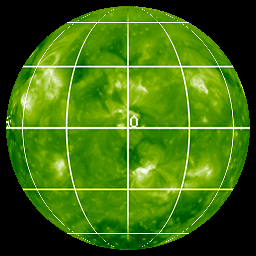 This movie shows a spherical map of the Sun, formed from a combination of STEREO Ahead and Behind beacon images, along with an SDO/AIA image in between. The movie starts with the view of the Sun as seen from Earth, with the 0 degree meridian line in the middle. The map then rotates through 360 degrees to show the part of the Sun not visible from Earth. The black wedge shows the part of the Sun not yet visible to the STEREO spacecraft.
This movie shows a spherical map of the Sun, formed from a combination of STEREO Ahead and Behind beacon images, along with an SDO/AIA image in between. The movie starts with the view of the Sun as seen from Earth, with the 0 degree meridian line in the middle. The map then rotates through 360 degrees to show the part of the Sun not visible from Earth. The black wedge shows the part of the Sun not yet visible to the STEREO spacecraft.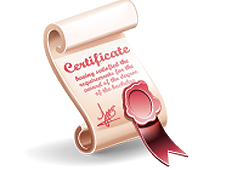 Would you like to receive recognition from NASA for your participation in the NASA Explorer Schools Project? Would you like to have the unique opportunity to participate in an all-expenses-paid, multi-day research experience at a NASA center? Are you committed to promoting and inspiring your students’ interest in STEM subjects? If so, then you should apply for NES recognition!
Would you like to receive recognition from NASA for your participation in the NASA Explorer Schools Project? Would you like to have the unique opportunity to participate in an all-expenses-paid, multi-day research experience at a NASA center? Are you committed to promoting and inspiring your students’ interest in STEM subjects? If so, then you should apply for NES recognition! On Feb. 8, from 11:15 a.m. to 12:15 p.m. EST, a special Digital Learning Network event with astronaut Ron Garan will be held. Garan is scheduled to launch to the International Space Station in March of this year. During the special webcast event, Garan will discuss his upcoming mission and answer questions from students. Students across the country will be able to watch the DLiNfo Channel’s webcast, and they will be able to e-mail their questions for Garan to answer during the program.
On Feb. 8, from 11:15 a.m. to 12:15 p.m. EST, a special Digital Learning Network event with astronaut Ron Garan will be held. Garan is scheduled to launch to the International Space Station in March of this year. During the special webcast event, Garan will discuss his upcoming mission and answer questions from students. Students across the country will be able to watch the DLiNfo Channel’s webcast, and they will be able to e-mail their questions for Garan to answer during the program. Completing the surveys counts towards your eligibility for the NES Recognition Program. To become eligible to apply for NES Recognition and have the opportunity to participate in a unique NASA event, you must complete one of each of the core NES activities:
Completing the surveys counts towards your eligibility for the NES Recognition Program. To become eligible to apply for NES Recognition and have the opportunity to participate in a unique NASA event, you must complete one of each of the core NES activities: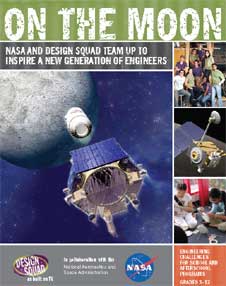 One of the challenges in education is to modify an activity to address objectives in multiple subject areas, challenging students to use skills from different subject areas to solve a problem. NASA Explorer Schools educator Chris Deleon at Hudson Middle School added a twist to the On Target content module that reached beyond the fundamental standards the activity covers.
One of the challenges in education is to modify an activity to address objectives in multiple subject areas, challenging students to use skills from different subject areas to solve a problem. NASA Explorer Schools educator Chris Deleon at Hudson Middle School added a twist to the On Target content module that reached beyond the fundamental standards the activity covers. As the Space Shuttle Program nears retirement, NASA is looking for ways to preserve the program’s history and inspire the next generation of space explorers, scientists and engineers. NASA is offering 7,000 shuttle heat shield tiles to schools and universities that want to share technology and a piece of space history with their students.
As the Space Shuttle Program nears retirement, NASA is looking for ways to preserve the program’s history and inspire the next generation of space explorers, scientists and engineers. NASA is offering 7,000 shuttle heat shield tiles to schools and universities that want to share technology and a piece of space history with their students.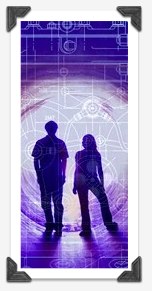 Educators are invited to register for 2-3 days of free workshop training and earn 12 to 18 hours toward continuing education units.
Educators are invited to register for 2-3 days of free workshop training and earn 12 to 18 hours toward continuing education units.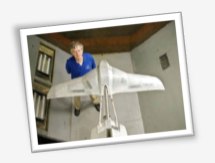 NASA Explorer Schools invites K-12 students to join a live chat on Jan. 21 from 2 – 3 p.m. EST with Dr. Joel S. Levine. Dr. Levine is the Chief Scientist of the ARES Mars Airplane Mission, and will answer questions about the the development of a robotic, rocket-powered airplane that will fly through the atmosphere of Mars to search for evidence of life by looking for trace gases of biogenic origin.
NASA Explorer Schools invites K-12 students to join a live chat on Jan. 21 from 2 – 3 p.m. EST with Dr. Joel S. Levine. Dr. Levine is the Chief Scientist of the ARES Mars Airplane Mission, and will answer questions about the the development of a robotic, rocket-powered airplane that will fly through the atmosphere of Mars to search for evidence of life by looking for trace gases of biogenic origin.